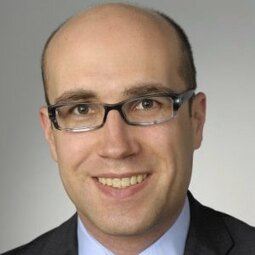|
Teledyne e2v’s innovations lead developments in healthcare, life sciences, space, transportation, defense and security, and industrial markets.
About Teledyne e2v Quantum Group In recent times the science behind the microscopic properties of atoms and subatomic particles has become better understood, bringing us closer to being able to utilise these properties. The team at Teledyne e2v aim to harness these effects to produce devices that have exciting new applications in the real world. The Quantum group consists of a team of circa. 25 highly skilled and talented people with skills in systems engineering, vacuum engineering, quantum physics, materials science, RF and microwave electronics, software engineering and mechanical engineering and are based in Chelmsford, Essex, UK. At Teledyne e2v, the seemingly impossible will become possible. Quantum technologies are set to provide much-improved capabilities in timing, sensing and measurement, electronics, imaging, computing and simulation, and communications. Within iqClock Teledyne e2v will develop the vacuum and control system for the integrated optical lattice clock (Task 1). About Teledyne e2v Teledyne e2v’s unique approach involves listening to the market and application challenges of customers and partnering with them to provide innovative standard, semi-custom or fully-custom imaging solutions, bringing increased value to their systems. We offer: • RF Power solutions for: defence electronic countermeasures, radiotherapy cancer treatment machines, radar systems, satellite communications amplifiers, industrial heating, cargo screening, ProWave® industrial processing systems, missile control safety and arming devices, and digital television transmitters. • Imaging solutions including CCD and CMOS sensors and cameras, for space and earth observation imaging, science and life science imaging, machine vision, ophthalmology and dental x-ray systems. • Semiconductor solutions for aerospace and defence programmes requiring: lifecycle management, hi-rel microprocessors, high speed data converters, high reliability ICs with lifetime continuity of supply, assembly and test services and MRAMs. Contact: quantum@teledyne-e2v.com |
Team members
|
As the Chief Technology Officer, Prof. Trevor Cross brings over 30 years of technology, product innovation and commercial experience, which includes over ten years spent at plc board level as Technical Director. He plays a pivotal role in Teledyne e2v’s university engagement programs and today leads the company’s growing Quantum Technologies activity. His experience in committee roles include council membership of the former Particle Physics and Astronomy Research Council, Chair of the Electronics, Sensors and Photonics KTN, and he currently chairs Innovate UK’s Special Interest Group in Quantum Technologies and is a board member of CSA Catapult.
|
|
Dr. Ole Kock is leading the science team for the development of Quantum Sensors and has set up the quantum prototyping facility at Teledyne e2v. Currently he is the project lead for over 6 projects relating to the development of quantum sensors. He has over 10 years of experience in the field of laser cooling and has specialized early in compact and mobile systems. Previous roles were in the Ultra Cold Atoms Group in Birmingham where he set up a mobile atomic optical clock with strontium during his PhD following two years as a Research Fellow.
|
|
Karen Munyard, Head of Verification & Test
Karen has over 10 years of experience in the test and verification of CCD and CMOS sensors and brings her knowledge of project development and control to the iqClock. She has a MPhys (Hons) in Physics from the University of St Andrews prior to working for Teledyne e2v. She is acting as project lead in the delivery of the physics package Teledyne e2v will deliver to the university of Birmingham. |
|
Marton Kiss-Toth is a Systems Engineer at Teledyne e2v in the Quantum Technology team, focusing primarily on space and navigation projects. He holds an MSc in Astronautics and Space Engineering from Cranfield University as well as a BSc in Physics. Before joining Teledyne e2v he worked on bringing a MVP to market in his role as project manager for StemCellX, and led the group design project both from a management and systems engineering perspective as part of his MSc, in conjunction with Hassell Studio, which resulted in a successful bid for the NASA Centennial Challenges 3D-Printed Habitat competition. He was also part of the Cranfield team to build a functional Mars Rover as part of the UKSeds organized Olympus Rover Trials competition, which went on to win the most innovative design award.
|







